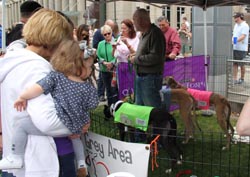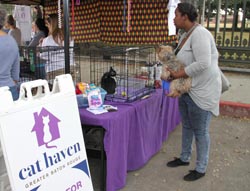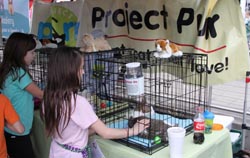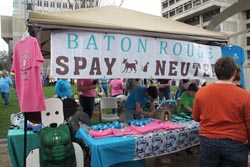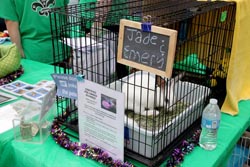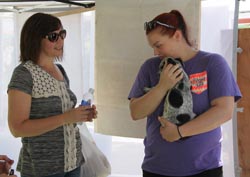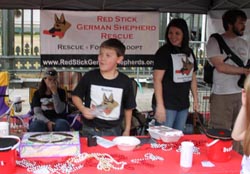In Noah's Footsteps: Traditions of Animal Rescue Groups in Baton Rouge
By Carolyn Ware

History, Overview, and Work of Animal Rescue Groups
Hurricane Katrina and Its Aftermath
Several political and social events over the past decade have prompted new awareness of animal welfare and initiatives for change. Hurricane Katrina in 2005 demonstrated that disaster planning must address the strong bonds between people and pets. When flooding left large portions of New Orleans, St. Bernard Parish, and Plaquemines Parish inaccessible for weeks, tens of thousands of dogs, cats, and other animals were stranded without food or drinking water, and many died before they could be rescued. The situation was exacerbated by federal and state disaster plans that did not include animal evacuation, rescue, or sheltering. People were not allowed to board evacuation buses with their pets or registered service animals (Hill 2006), and many pet owners chose to remain in the flooded city rather than abandon their animals. Those who evacuated in their own vehicles discovered that emergency shelters in Baton Rouge and other communities did not allow pets.
In response to the post-Katrina animal crisis, two emergency animal shelters were hurriedly established in the greater Baton Rouge area (Bacher and Devlin 2005). The Parker Coliseum pet shelter on the Louisiana State University campus in Baton Rouge housed pets temporarily surrendered by their displaced owners, and the Lamar-Dixon shelter in Gonzales took in dogs, cats, horses, and other animals rescued from flooded areas. Veteran animal rescuers in Baton Rouge played important roles in caring for displaced animals at the shelters, especially at the Lamar-Dixon shelter where the need was greatest. Some volunteers also took rescued animals into their own homes until owners could be identified and located (Hirsch 2011).
Because many rescued animals lacked identification tags or microchips, only a small percentage of the dogs and even fewer cats at the Lamar-Dixon shelter were successfully reunited with their owners. When the temporary shelters closed, unclaimed dogs and cats were sent to out-of-state animal shelters, or were adopted by rescuers and shelter caregivers.
Hurricane Katrina prompted local animal welfare activists to lobby for new laws that allowed people and their pets to remain together in disasters. Veteran cat rescuer and senior legislative researcher Cathy Wells was instrumental in drafting Louisiana State Senate Bill 607, a law that "requires all parish emergency preparedness centers to develop an evacuation plan for pets that comes complete with a tracking system so owners can feel confident they will be reunited" (Hill 2006). Hundreds of supporters rallied at the Louisiana State Capitol, and the bill became the first statewide pet evacuation law in the United States (Hill 2006, Hirsch 2011).
No-Kill Initiatives
Hurricane Katrina was one impetus for greater awareness of animal welfare in the greater Baton Rouge area. Another was the emergence of a national no-kill movement that seeks to end euthanasia of healthy, adoptable pets in animal shelters. 2 In 2009, local animal advocates met to discuss the city's high euthanasia rate and possible solutions. The eventual result was the Baton Rouge No-Kill Community Initiative, a collaborative effort to "ensure that no heathy, adoptable animal is euthanized" (Hirsch 2011) by "expanding adoptions and spaying and neutering programs" (Baton Rouge Advocate Staff 2013).
No-kill initiatives require considerable community involvement and the coordinated efforts of many different organizations, including animal rescue groups (Project Purr 2015). Over the past decade, a variety of local groups have worked toward the goal of reducing the number of animals euthanized at the East Baton Rouge municipal shelter, but there are many economic and social obstacles. The chronically underfunded parish shelter is an open shelter, which means that it cannot turn away any animal surrendered by East Baton Rouge Parish residents. Therefore it receives far more animals—many with serious health problems such as heartworm infestations—than it can find homes for. As a result, the shelter historically had a high euthanasia rate, as many as 80 percent of shelter residents, or 10,000 animals a year until recently (Allen 2014b).
A transition began in 2011 when a group of local animal welfare activists formed Companion Animal Alliance or CAA (not to be confused with CAAWS) and assumed management of the East Baton Rouge Parish (EBR) shelter from Animal Control. CAA members hoped to transform the shelter into a no-kill facility almost immediately, but this timeline proved unfeasible as the shelter grew even more overcrowded. The CAA's first two years of operation were difficult and controversial, marked by the departure of several executive directors and other setbacks (Allen 2014b).
The situation has improved considerably since then, through the hard work of CAA staff, volunteers, and other local rescue partners. Together, they are working steadily to improve public outreach, reduce the number of animals entering the shelter, tensure humane treatment of the animals there, return lost pets to their owners, and to find permanent or foster homes for lost and abandoned animals (Companion Animal Alliance 2015). Although the shelter still receives more surrendered animals than it does applications for adoption, in 2014 the Companion Animal Alliance "rescued, returned, rehabilitated and rehomed nearly 5,200 homeless animals—the highest number in shelter history" according to its outreach director (Hirsch 2015). Still, they continue to receive more animals than they can find homes for. "CAA does a great job and tries very hard," says one rescuer, "but they get too many animals." The prospect of healthy, adoptable animals being euthanized because of lack of space lends a constant sense of urgency to local rescue groups' efforts. Finding permanent homes for shelter dogs and cats is a perpetual race against time, one of the most difficult aspects of animal rescue in Louisiana.
An Overview of Baton Rouge Animal Rescue Groups
A number of non-profit animal organizations are crucial partners in the city's goal of reducing the number of abandoned, homeless, or euthanized animals. Some, like CAAWS and Cat Haven, have been active for years, but the majority were formed in the past ten years. Many were created specifically to pull animals out of public animal control facilities with high euthanasia rates, place them in foster homes, and find permanent adoptive homes for them. Although there are inevitably differences of opinion and competition for resources among these rescue groups, they work cooperatively toward common goals. A Baton Rouge rescuer explains that "Any rescue [organization] in town" is engaged in informal partnerships with the others, because "We are all in it for the very same reason," to save lives (Coleman 2015).
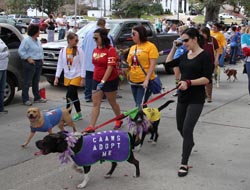
The Capital Area Animal Welfare Society has been actively working since 1980 to further its goal of making Baton Rouge "a model in the American South where all adoptable animals find loving homes" (CAAWS 2015b). For years, CAAWS was the "only game in town" for animal welfare, a longtime activist says, and many founders of newer rescue groups gained valuable experience as CAAWS volunteers. With its own adoption house for dogs and cats, a strong volunteer base, and high-profile events such as the Mystic Krewe of Mutts parade described above, CAAWS continues to play a crucial part in the Baton Rouge animal rescue community. It has been joined by other societies in the region which care for both cats and dogs, including the Northside Humane Society, the Animal Protection and Welfare Society (APAWS), the SPCA of Livingston, Don't Be Cruel (based in the Amelia, Louisiana area), and the Feliciana Animal Welfare Society (FAWS), a network of foster caregivers in East Feliciana Parish, among others.
A relatively new all-volunteer organization, the Rescue Bank of Baton Rouge, was formed to fill an unmet need among animal rescue groups: free pet food. Rescue bank volunteers arrange for donations of food from manufacturers, pay the shipping cost, and distribute the food to many of the groups described in this essay. Judy Atkinson, one of the founders, explained to a reporter that this service allows rescue groups to spend more of their funds on veterinary care and other needs, because "the food is critical. You can't have 30 dogs and 60 cats and not have food for them every night" (Morris 2014b).
Dog Rescue Groups
Private rescue groups often choose to focus their efforts on either dogs or cats, because it is simpler and less stressful for the animals. Two of the most active dog rescue organizations in Baton Rouge are Yelp!BR and Friends of the Animals (FOTA), both of which seek homes for dogs "pulled" from the CAA shelter.
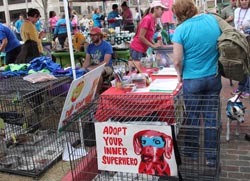
Yelp!BR was formed in 2009 by Commercial Properties Realty Trust employees to increase dog adoption rates at the East Baton Rouge shelter by holding adoption days. The group initially housed shelter dogs at a boarding facility and in foster homes, but as the project grew, they needed their own "bricks-and-mortar" adoption house. The Yelp House opened in 2010 and can accommodate 40 dogs pulled from the municipal shelter at a time. The organization has found homes for more than 3,000 dogs since its inception (Yelp!BR 2015).
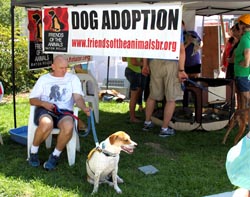
Friends of the Animals (FOTA) was created in 2010 by Paula Schoen as "a booster group to improve the quality of life for animals in the East Baton Rouge Parish Animal Shelter" (Hirsch 2011). Initially the group worked onsite at the CAA shelter to improve conditions for homeless animals there. Volunteers walked dogs and helped socialize them, and the group raised money for veterinary care, purchased a trailer to house animals, and made other improvements to the shelter facility. FOTA also began holding offsite adoptions for shelter dogs at accessible, dog-friendly places such as the Orvis store and Baton Rouge Arts Market, because potential adopters often found visiting the CAA shelter to be overwhelming. Paula Schoen says that FOTA members "always wanted a place offsite that people felt it was a home environment" to hold adoptions (Schoen 2014). In 2013, the rescue group leased a home on Highland Road and opened the Friends of the Animals adoption house, where dogs being fostered in private homes can enjoy "doggy day care" before returning to their foster homes in the evening.
Like most non-profit rescue groups, Friends of the Animals relies on a strong volunteer network. Early on, Paul Schoen says, the group "decided that our vision would be primarily building a foster base" (2014). Board members pull dogs from the CAA only when a foster home is available to accept them, and they select dogs that will be compatible to that specific foster home. Foster parents have the option of dropping their foster dogs at the FOTA house in the morning, where they can visit with potential adopters in a relaxed, homelike environment. The FOTA house has greatly increased the number of adoptions, and as many as 95% of adoptions now take place at the house. Nevertheless, FOTA continues to hold regular adoption events offsite.
Friends of the Animals also administers an innovative program called Positive Alternatives to Shelter Surrender (PASS), which seeks to prevent dogs from ending up in the parish shelter in the first place. Owners who wish to find new homes for their dogs are required to keep the pet at home, while FOTA volunteers work with them to find other options than shelter surrender.
Other dog rescue groups specialize in fostering and re-homing specific breeds. Founders and members generally feel a strong attachment to that breed, and usually own one or more of these dogs themselves. Attorney Maggie Thomas, founder of Red Stick German Shepherd Rescue, explained her group's motivation to a journalist in simple terms: "We're German Shepherd people" (Bethencourt 2015). Similarly, the Gulf Coast Doberman Rescue website states that the group rescues Doberman Retrievers for "the love of the breed. Period" (Gulf Coast Doberman Rescue 2015). However, certain breeds are especially vulnerable to being abandoned or surrendered to shelters because of their size or high energy levels, or because puppy mills breed too many of them. Gulf Coast Doberman Rescue notes on its website that 20% of all Doberman Pinschers produced end up in rescue organizations (2015).
Beagles are another kind of dog that too often ends up in public animal shelters. Retired speech therapist and beagle rescuer Cindy Peterson suggests that many families who purchase beagle puppies as children's pets do not realize that they are a "high octane breed," and surrender the dogs once they outgrow the cute puppy stage. Beagles are also popular hunting dogs in rural Louisiana, and many get lost or left behind during hunts. In 2002, Cindy Peterson decided to create a "Mom and Pop" beagle rescue organization because "it seemed that the beagle breed needed tremendous help" (2015). Based in Ascension Parish, Hokie's Hounds Beagle Rescue is named in honor of her first pet dog, a beagle named Hokie. Like many rescuers, Peterson says that much of what she does is to educate potential adopters about the breed.
It's a Grey Area Greyhound Adoption responds to another breed-specific need: finding homes for racing greyhounds when they are retired as young adults. Founder Lesley Ezkovich also seeks to correct misperceptions about the breed and greyhound racing. Despite what most people think, for example, racing greyhounds are no longer routinely euthanized upon retirement, she says (Ezkovich 2015). Retired greyhounds do need good homes, however, and It's a Grey Area is dedicated to finding them. Other regional breed rescue groups include Gulf South Golden Retriever Rescue, Baton Rouge Border Collie Rescue, MinPin [Miniature Pinscher] Rescue, and Pit Stop Pit Bull Rescue, among others.
Looking Fur Love Dog Rescue was created not to serve a particular breed of dog, but a certain kind of dog owner. The group helps hospice patients and military families to find new homes for pets they can no longer care for, and generally serves as an advocate for "needy, overlooked and forgotten dogs" that are hard to find new homes for (Looking Fur Love Dog Rescue n.d.)
Cat Rescue Groups
Homeless cats typically receive less public attention than dogs, and are euthanized in greater numbers at public shelters. At one point, 90% of the cats that came into the East Baton Rouge municipal shelter were euthanized, including many feral and stray cats (Hirsch 2015). Deciding that more needed to be done for cats, advocates formed a number of foster-based, cat-only rescue organizations.
The area's first cat-only group was Cat Haven, created in 1999 by attorney Wendy Decker and two friends who shared a special affinity for cats. The organization's primary mission is to take in, and offer a lifelong safe haven for, cats and kittens whose owners can no longer take care of them, as well as orphaned kittens and abandoned cats rescued by "Good Samaritans" (Decker 2015). Cat Haven's adoption contract asks adopters to return their cat to the organization if they are unable to care for it, even years after adoption. Cat Haven became the first local rescue organization to spay or neuter every animal before it was adopted, now a standard practice.
One of the organization's strengths has been its founders' connections not only to the animal welfare community (they were former CAAWS volunteers), but also to the larger Baton Rouge business community. In 2005, the organization achieved its goal of purchasing its own building and converting it to a cat adoption house, allowing Cat Haven to help many more cats. In 2014, for instance, Cat Haven took in more than 750 cats and kittens. In recent years, Cat Haven has begun accepting kittens from the CAA shelter and placing them in foster homes before adoption. The need for foster homes is especially pressing during Louisiana's long "kitten season," usually from late spring to early fall, when countless litters of kittens need homes. (Kitten season also happens to be puppy season, increasing the competition for foster homes.) Like Friends of the Animals, Cat Haven leaders say that most adoptions now take place at the Cat Haven Adoption house, but weekend offsite adoption events are still important to public relations.
Project Purr is a newer cat-only rescue group, created in 2010 by physician Peggy Polk specifically to save adoptable cats and kittens in the EBR municipal shelter from euthanasia. As its website states, Project Purr organizers "believe that with hard work and strong community support, no impounded cat or kitten should have to die because of lack of space" (Project Purr 2015) . Like most rescue groups, Project Purr places these cats and kittens with foster caretakers until they are adopted into permanent homes. The organization is inventive in its number of adoption events each week (as many as ten) and weekend venues such as the Baton Rouge Arts Market and the Mall of Acadiana, as well as at large pet-goods stores.
In addition to the many cats awaiting adoption at shelters and in foster homes, Baton Rouge is home to thousands of feral (wild or unowned) cats. The cats are often regarded as nuisances, and their welfare has taken a back seat to other kinds of animal rescue. Programs that humanely trap, spay or neuter, and release them (known as TNR) are "not a glamorous part of the animal rescue world," as veteran cat rescuer Cathy Wells told a reporter (Olivier 2014). However, these initiatives are an essential component of Baton Rouge animal welfare efforts; they not only improve the lives of individual feral cats, but help control the city's cat population (Huston 2014, Morris 2014a, CAAWS 2015, Hirsch 2015, Samuels 2015).
One of the earliest successful TNR programs in Baton Rouge began in 1992 on Louisiana State University's campus, where an estimated 500 to 700 feral or stray cats then lived (Companion Animal Alliance 2014). Then-faculty member Merle Suhayda and other volunteers began trapping these cats, partnering with local veterinarians to spay and neuter them. Over the next two decades, Suhayda estimates, as many as 1,400 cats were neutered and released (CAA 2014).
Other local groups have followed in these TNR footsteps. One of the most active networks is the Feral Cat Coalition, headed by animal rescue activists Cathy Wells, Suellen Stafford, and Margaret Madere. "I would rather address the problem on the front end rather than on the back end," Suellen Stafford told a journalist, because "we're not going to adopt our way out of this mess" (Morris 2014a). Other animal welfare organizations are also working to address the problem on the "front end" through trap, neuter, and release programs. Among these are the Northside Humane Society, the Red Stick Animal Alliance, the Baton Rouge Community Cat Alliance, FAWS, Don't Be Cruel, and CAAWS. A number of individuals and small networks regularly feed feral cat colonies (Friends or Ferals, Cheryl's Ferals, Hands of Hope) or provide a place for feral cats to live (Pandi's Animal Sanctuary).
Feral cat TNR initiatives would not be possible without the help of local veterinary partners who spay and neuter feral cats at reduced fees, and organizations such as Spay Baton Rouge and Baton Rouge Spay/Neuter. Another piece of this initiative is Spay Day, which takes place on eight or nine Sundays each year at the LSU School of Veterinary Medicine. Spay Day provides spaying and neutering for as many as 200 cats in low-income homes and for feral cats, with animal rescuers, veterinarians, vet techs, and vet students donating their time and skills.
Cat welfare activists achieved a major goal in 2014, when the Baton Rouge City Council approved a year-long trial program called the Community Cat Initiative. The result of a partnership of the Companion Animal Alliance with Spay Baton Rouge, the Feral Cat Coalition, and Baton Rouge Spay/Neuter, the program supports the trapping, neutering, and release of feral and ownerless "community cats," instead of euthanizing them at the municipal shelter (Allen 2014, Samuels 2014). In less than a year, the CAA has released more than 1,000 cats and kittens to the Feral Cat Coalition, greatly reducing the number of cats euthanized at the shelter (Hirsch 2015).
Exotic Species Rescue Groups
Dog and cat rescue groups have the highest public profile, but there is another, smaller niche: finding homes for less common pets such as rabbits, guinea pigs, rats, and other small exotic species. Magic Happens Rabbit Rescue (MHRR) is a small network of volunteers who have rescued and re-homed rabbits in the greater Baton Rouge area since 2004. Baby rabbits are popular gifts for children at Easter and Christmas gifts, but families are not prepared to care for them as long-term pets, and many are abandoned. Group members also educate the public about rabbits through classroom talks and public events.
Other small animals can be even more difficult to find homes for. For the Love of Rats Rescue is the work of a few pet lovers who are dedicated to finding good permanent homes for rats, guinea pigs, gerbils, prairie dogs, Australian sugar gliders, and other small, exotic mammals that are overlooked by most animal rescue organizations.
Animal Rescue Volunteers
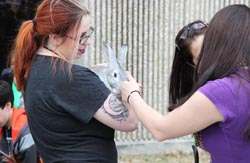
Animal rescue is a labor of love, many rescuers say. Some well-established rescue groups have a few full- or part-time staff members, but the great majority of rescuers are volunteers who donate their time to improve animal welfare (Duggan 2012). As many as 80% to 90% are women and girls, although some men also are active volunteers and advocates. 3 Volunteers range in age from teenagers (some local colleges offer service hours to students who volunteer at animal welfare facilities), to adults who work in fulltime "real" jobs, to retirees. Almost all have their own pets and describe themselves as lifelong animal lovers. There are many different ways of contributing to animal rescue efforts. Most volunteers work for perhaps a few hours a month with an animal rescue organization; a smaller number dedicate much of their free time to animal welfare work.
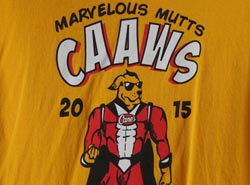
Whatever their level of commitment, animal workers tend to "wear their heart on their sleeve," as folklorist and former shelter employee Tami Harbolt writes (2002:16). Although Harbolt means this metaphorically, many volunteers do express their love of animals through clothing, especially t-shirts bearing rescue group logos or slogans such as "I rescue cats. What's your superpower?" or "My favorite breed is rescue." A smaller number have visible tattoos in remembrance of favorite pets.
Animal rescue volunteers often describe their work with animals as a passion. Perhaps it is not surprising, then, that they tend to have very strong opinions about animal health and welfare. In a high-kill community, as Baton Rouge still is, there is a sense of urgency to save as many animals from death as possible. Sometimes a lack of consensus hobbles a group, but as one rescuer comments, "We're all in the same boat, and we have to make this boat not go in circles." Focusing on shared goals and working together is the most effective approach to saving animal lives in Baton Rouge.
A few volunteers have a strong preference for cats, dogs, or other species, with little interest in other kinds of animals. But many work with both dogs and cats, for example, and their own pets often include cats, dogs, and sometimes other animals. "When you love animals, you just love them all," says Abby Santini, Executive Director of Project Purr, who owns three cats and three dogs with her husband and young son (2015).
The Work of Animal Rescue Organizations
Animal rescue work takes many forms, and volunteers bring their own skills, interests, and talents to it. In organizations with their own adoption houses, there are a variety of caretaking duties: playing with and socializing animals awaiting adoption; feeding , grooming, and watering resident animals; walking dogs; cleaning kennels and litter boxes; and other necessary tasks to maintain healthy living conditions and happy animals. Organizations sometimes combine cleaning and sociability to make it more enjoyable for volunteers. Magic Happens Rabbit Rescue, for example, does not have a shelter of its own, but as many as half of its foster rabbits are housed at the group director's home. Once or twice a month, a Magic Happens "Care Day" invites volunteers and rabbit lovers to gather there to clean rabbit cages and litterboxes, groom the rabbits, and play with them to help socialize them (Magic Happens Animal Rescue 2015).
Volunteers can play a more public role as adoption counsellors, sometimes called matchmakers. The Project Purr website explains that "We are in the business of saving lives, and we depend on our adoption counsellors to be good matchmakers. This is one of the most rewarding areas of our operation, because you get to see our kitties go home with great people who have big smiles on their faces" (Project Purr 2015). Matchmakers talk with visitors at adoption events or adoption houses, introduce them to eligible animals there, try to ensure a compatible match, and guide adopters through the application and approval process. Adoption volunteers, like all who have contact with the public, also help to educate potential adopters about various aspects of animal care and behavior.
Organizing and implementing special events offers another volunteer niche. These events range from large, public celebrations such as CAAWS' Krewe of Mutts parade, Project Yelp!'s annual costumed Halloween run for owners and dogs, and various galas, to silent auctions and Friday-afternoon "Yappy Hours" for dogs and their owners.
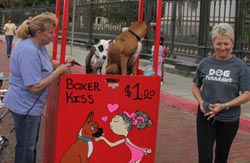
Volunteers are also active in public outreach initiatives, communications, fundraising, and membership drives, all pressing concerns for volunteer-based groups. They help to inform the public about the group and its work, solicit donations, reach potential adoptive families or volunteers, and generally share the group's message with the larger community.
Fostering
The core of most nonprofit animal rescue groups is a strong network of foster caretakers (often shortened to "fosters") who take animals into their homes and socialize them until they are adopted. Fostering an animal is one of the most demanding volunteer positions, and also the most rewarding. Rescue organizations, large or small, could not function without willing fosters; each dog or cat or rabbit in a foster home makes room for one more rescue.
Typically a foster agrees to care for an animal in her or his home until it is adopted, which may be a few days or weeks, a month, even a year. In some cases, the foster caregiver commits to a shorter period—long enough to wean a litter of young kittens from bottle feeding, for example. The foster parent assumes responsibility for the cost of pet food, cat litter for foster cats, and other supplies, and the rescue organization pays for veterinary care, including spaying or neutering, vaccinations, and medicines. Medical expenses add up, even working with veterinary partners working at cost. Paula Schoen says that Friends of the Animals spends $50,000 to $60,000 a year on medical care, for example (2014).
Experienced volunteers encourage prospective foster parents to "prioritize and think about how a foster [animal] will fit into your household," because fostering can be "like opening a child care center in your home" (Coleman 2015). In addition to daily care, most foster parents are expected to bring the animal to adoption events once or twice a month.
Foster care provides immense benefits for a homeless animal, especially one coming from a public shelter or other difficult circumstances. Even the best-run public shelters are stressful for animals; they are typically noisy, offer little opportunity for exercise or human interaction, and are usually "understaffed, underfunded, and overcrowded" (Scott 2006:13). A dog in a shelter, an experienced rescuer says, is "like an inmate in prison," and life there can be a psychologically devastating experience, even if the dog is eventually adopted into a good home. Being placed in a private foster home, often with several people and other animals living there, provides an important socialization experience for the animal, which learns to trust people, relax, and allow its personality to emerge.
Foster caregivers provide affection, discipline, exercise, and prepare the foster animal to become a pet. They also learn essential things about the animal and its disposition that help determine what kind of permanent home would be best for them (Red Stick German Shepherd Rescue 2015). Fostered dogs and cats are usually adopted more rapidly because they are used to people. Sharon Coleman, president of Friends of the Animals in Baton Rouge, pulls dogs from the EBR shelter when an appropriate foster home becomes available. She says that their fostered dogs are usually adopted within two weeks, except for large dogs, which take longer because there is less demand for them as for small dogs (Coleman 2015). Finding homes for black cats and dogs may also take extra time, perhaps because of folk beliefs associating them with bad luck.
Rescuers often comment that the foster system not only saves the life of the animal being fostered, it saves other animals' lives. Each cat or dog placed in a foster home opens up a valuable space in public shelters and rescue groups, which can then take in other animals that might otherwise be euthanized. Abby Santini of Project Purr says, "Fostering is really rewarding because you're saving a cat that could have been euthanized. What we tell all our fosters, when they foster a cat, they're saving two cats" because they free up a cage at the shelter (2015).
Foster caregivers often become very attached to the animals they bring into their homes, play with, and establish mutual trust with. This attachment can make it difficult to hand the animal over for permanent adoption. Seasoned caregivers focus on the fact that they can save more animals by fostering than by adopting, but at some point, almost every foster parent falls in love with an animal they cannot give up—and over time, often more than one. Abby Santini says that with Project Purr foster caregivers, there is always "just one cat that you cannot adopt out—not because you can't find a home for it, but because they're attached to that cat" and end up adopting it themselves (2015).
This common situation is referred to as a "foster fail." These "fails" reveal the powerful bonds that develop between rescuers and the animals they take care of, and the importance of the human-animal bond in general. In many ways, foster fails are a happy ending for both foster parent and animal, especially if the caregiver continues to foster other animals, as they often do. But a foster fail also means one less space for another dog or cat to be pulled from the shelter, placed in foster care, and eventually adopted out. Such cases, Sharon Coleman says, are "good for the dog, bad for the foster system. We want other people to adopt the dogs, not our fosters" (2015).
The difficulty of recruiting and retaining regular volunteers, and particularly foster caregivers, is one of the most frustrating aspects of rescue work. Fostering an animal can be time-consuming and emotionally difficult, and volunteer burnout is common while the problem of unwanted dogs, cats, and other animals is never-ending. "If we could have more fosters, more matchmakers, we could get so many more adopted," Abby Santini says (2015).
Toward that end, some rescue organizations are experimenting with different models for fostering. Historically, most groups have sought "permanent" foster care—that is, a private home that will care for an animal until it is adopted. But sometimes short-term foster care can work just as well for some animals. Cat Haven often places young kittens in private homes for only a few weeks, until they are old enough to eat on their own, for example, or to complete their vaccination schedule. At that point, kittens can be safely housed in the Cat Haven adoption house, where they are quickly adopted.
Friends of the Animals members are also learning as they go, and experimenting with shorter-term forms of foster care. In addition to permanent foster homes, FOTA now offers temporary fostering for a night or a weekend, and "respite care" when a foster caretaker needs to be out of town for a few days. Even short foster experiences can lead to adoption because "We learn things about an animal in a home for a weekend" that help get it adopted (Coleman 2015). FOTA is also working on a new option of permanent foster teams or "tag team foster," in which two households share fostering.
On the other hand, once an animal is in a good foster home, it may stay there longer than necessary while the rescue group seeks the perfect permanent home for it. "There is a tendency to hang onto foster dogs too long while you look for the perfect family," Sharon Coleman says. "But you can't do that because if you hang onto them, you can't save other dogs" (2015). Groups have to learn to accept a good home, not necessarily a perfect one, Coleman suggests.
Adoptions and Ambivalence
The ultimate goal of most animal rescue initiatives is to place an animal in a loving, permanent home. Most groups hold weekend adoption fairs in pet-goods stores, malls, and other retail spaces to showcase adoptable dogs or cats. Volunteer matchmakers talk with visitors, introduce them to the animals, answer questions about pet care, and assist with adoption applications. For many foster-based groups, these events are a primary venue for adoptions.
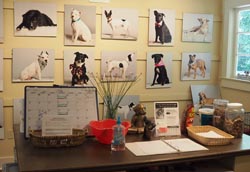
A few organizations, such as Cat Haven, Friends of the Animals, CAAWS, and Yelp!BR, have their own adoption houses that are open during the work week as well as on weekends. Members of Cat Haven and FOTA say that most adoptions now take place at their houses, which offer a more relaxed setting for adopters and animals to interact more closely. Still, these groups still hold offsite adoption events because they frequently "plant a seed," Wendy Decker says, and may lead to an adoption later on (2015).
Rescue groups generally celebrate completed adoptions as success stories. Cat Haven, like other rescue organizations, sends out regular emails to members, naming the cats adopted since the last message. It is these happy endings, several rescuers have commented, that make their work rewarding. Asked what she likes best about her position as Executive Director of Project Purr, Abby Santini said, "Seeing the whole process. Seeing the cat in the shelter, pulling it for foster, being involved with adoption, and then having owners send photos of the cats" in their new homes (2015).
Ironically, the adoption process can also provoke ambivalence among foster caretakers and other volunteers. Sociologists Janet M. Alger and Steven F. Alger, who spent time as volunteers and ethnographers at a private cat shelter in Albany, New York, suggest that there are several sources for these mixed feelings (2003: 166-168). For instance, volunteers see each animal as unique and thus irreplaceable, and they form strong attachments to specific animals, especially longtime residents or fosters.
The biggest source of ambivalence is the question of suitability: Will this home be a good one for this animal? Despite careful screening processes, there is always some uncertainty. Adopting out animals is "a little like playing God"(Coleman 2015), and rescuers may agonize over whether a potential adopter is the right fit for a particular cat or dog. These questions are particularly pressing because many rescued animals have already survived abandonment or abuse (Alger and Alger 2003). Animal rescuers have to rely on what one calls a "gut feeling" about a potential adopter, but these are the cases they lose sleep over. "We all have our regrets," Paula Schoen says, and need to learn "how to feel that balance [and] go with the gut" (2015).
Hand in Hand: Social Media and Animal Rescue
Rescue groups today recognize that their (unpaid) business is to save animal lives by finding good homes for homeless animals, and marketing skills are essential to their success. Various forms of social media have become essential tools in reaching out to potential donors, adopters, and community partners. "Animal rescue and social media go hand in hand," a Cat Haven staff member commented recently (2015). On organizational websites and Facebook pages ("everyone's on Facebook," a young rescuer comments), groups post photographs and short biographies of adoptable animals, notices of upcoming special events, requests for volunteers, invitations to donate or become a member, and other news. Often online readers can download an adoption form or make a donation online, and adoptive families can post photographs and updates on their happy pets. Some rescue websites also post articles about responsible animal care and other relevant topics. PetFinder also has become a valuable resource for sharing information about specific pets needing homes. These media, frequently updated by volunteers, reach a much wider audience than older forms of communication, and are perhaps the most common way of disseminating animal rescue information.



